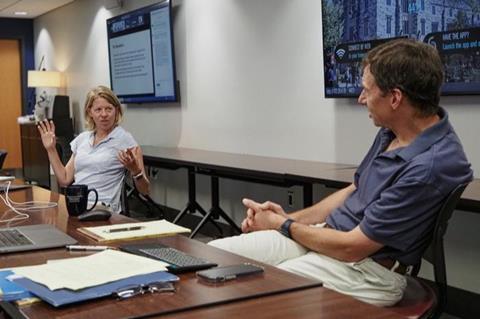The key to better understanding the spread of infectious diseases may lie where the humanities and the health sciences meet.

It’s a theme that a group of Virginia Tech faculty is exploring to develop new undergraduate courses that will likely be offered next fall across departments.
READ MORE: Effective health comms needed to save lives during epidemics
READ MORE: Networking & communications advice for early career researchers
Professors in the College of Liberal Arts and Human Sciences are teaming up with colleagues in the College of Science and the Virginia-Maryland College of Veterinary Medicine for the project, titled Human Dimensions of Infectious Disease.
Interdisciplinary partnerships
Their work is funded by a $50,000 Human Connections Grant from the National Endowment of the Humanities, which seeks to expand the role of the humanities through interdisciplinary partnerships. Collectively, their areas of expertise include topics such as health communication, health and medicine rhetoric, biomedical ethics, history of medicine, global-international health issues, biology, and infectious disease modeling.
The group held workshops over the summer to discuss how different disciplines can work together on a range of infectious-disease related issues. During one of the workshops, professors pointed out mistakes made — both by the media and the scientific community — as researchers and the public grasped for a better understanding of the coronavirus. Many of the issues stemmed from a lack of proper communication.
Lessons learned from a pandemic
“One of the most important things that emerged from the pandemic is the importance of narrative,” said Nick Ruktanonchai, assistant professor in the Department of Population Health Sciences. “How are things being portrayed? How are people taking them? Are they able to take in the narrative?”
During the early stages of the pandemic, research preprints, which are preliminary, non-peer reviewed versions of research articles, were shared hastily because researchers needed to learn about the disease in “days and weeks rather than months,” he said.
“Modeling any emerging pandemic is really difficult,” Ruktanonchai said. “There’s a million different things you evaluate, and it’s especially hard.”
But it soon became an issue because fewer than half of the news outlets that reported on research preprints included that the science was not peer reviewed — potentially contributing to a cycle of misinformation. He said incentives to publish the research created “some good” and “some bad” science. He stressed the importance of learning from past mistakes and making sure students understand how to interact with news and literature.
Stories about science
Rebecca Hester, associate professor in the Department of Science, Technology, and Society, shared similar sentiments. She said stories told about science have real-world impact on people’s lives because they shape the work scientists do in the lab and the policies that govern everyone.
She said while students are often taught “how to do the science and apply it,” they aren’t always taught “what kind of science should be applied.”
“One of the things that is really relevant for this group and with regard to infectious diseases is that there’s a huge connection between helping people understand what story is being told and what the actual policy and scientific solutions are that get proposed based on that story,” she said. “I think that’s another way that the humanities can really help scientific students as well as humanistic students.”
Learning from the past
Thomas Ewing, professor in the Department of History and the College of Liberal Arts and Human Sciences’ associate dean for graduate studies and research, is leading the project. As a historian, Ewing knows the importance of learning from the past, which he said can help people understand “what’s different and unique about what they’re going through” as well as similarities to other events.
“You can go back and look at how people have responded to something like a vaccine mandate, which Americans have had in various forms for decades, but they’ve tended to be more for children’s vaccines,” he said.
A new approach
The group will continue to meet monthly throughout the academic year to develop three new courses that explore human dimensions of infectious diseases, the history of infectious diseases, and health disparities and infectious diseases. In the meantime, professors are updating their current course curriculums and teaching approaches to include aspects of the group’s discussions.
Ewing said the initiative is consistent with Virginia Tech and the College of Liberal Arts and Human Science priorities to emphasize interdisciplinary approaches to important social and educational issues.
The grants are competitive, Ewing said, with a 21 percent funding rate over the past five years. Along with funding faculty workshops, the grant will help bring speakers to Virginia Tech to share their expertise in connecting humanities and public health approaches to infectious diseases.
Who’s involved
- Julie Gerdes, assistant professor of technical and professional writing and rhetoric
- Edward Polanco, assistant professor of history
- Patrick Ridge, associate professor of Spanish
- Adrienne Holz, associate professor in the school of communication
- Jeremy Draghi, assistant professor of biological sciences
- Department of Science, Technology, and Society Assistant Professors Cora Olson and John Aggrey and Associate Professor Rebecca Hester
- Department of Population Health Sciences Assistant Professors Alasdair Cohen, Cori W. Ruktanonchai and Nick Ruktanonchai and Associate Professor Yuba Gautam







No comments yet